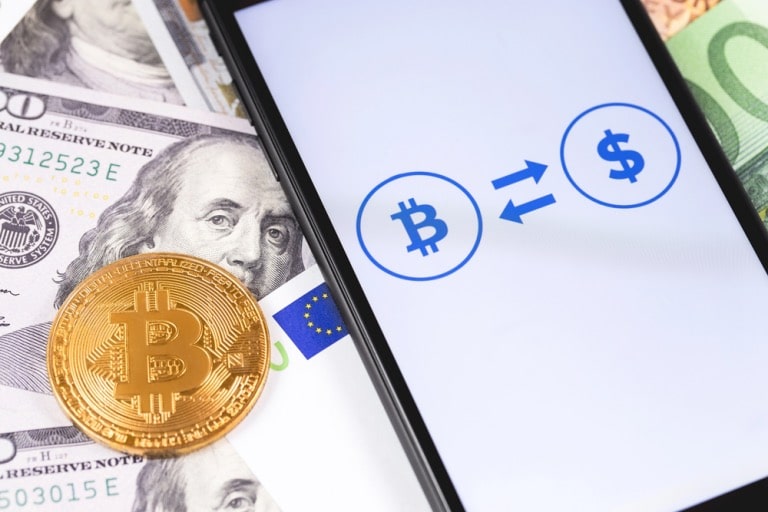Is Crypto Replacing Fiat

The relationship between cryptocurrency and traditional money has shifted so much over the past decade that the question itself no longer sounds unrealistic.
What once felt like a niche experiment, discussed only by early tech adopters, now appears in conversations between everyday savers, retail traders, small business owners, and even people who have only recently begun learning about digital currencies.
This shift has created growing interest in which projects might survive in the long term, especially among investors who scan trending markets and look for new opportunities.
That interest is also why people often talk about finding the next 100x crypto when they look at how digital assets could reshape the money system as a whole, since the search for high-potential tokens often overlaps with wider discussions about whether crypto is slowly taking the role fiat currencies have held for generations.
How Crypto Entered the Mainstream Conversation
For years, digital currencies were treated as a novelty rather than a legitimate form of money. Many people saw them as speculative assets that moved in unpredictable ways and served a very narrow audience. That view changed once large payment companies, major banks, and international brands began experimenting with blockchain infrastructure. Even people who were unsure about crypto had to admit that something fundamental was happening.
The turning point came when ordinary customers were offered simple ways to buy and store digital assets in apps they were already using.
Once that barrier fell, interest rose quickly. People did not need to understand every technical detail to see the value of instant transfers, low fees, and ownership that did not depend on a central bank or a single company. This wider accessibility helped more countries adopt cryptocurrency than ever before.
Why People Compare Crypto and Fiat
The comparison usually begins with one simple observation. Crypto offers global access without the need for a bank account or traditional credit system, which attracts people who want more control over their money.
Fiat currencies still dominate daily life, but they rely on national governments, regulated banks, and established financial infrastructure. This difference has led many people to wonder whether a digital form of money that operates independently could eventually take over, or at least sit beside fiat currencies on equal terms.
Inflation has also played a major role in pushing this debate forward.
When the cost of living rises quickly, people begin looking for ways to protect their savings, and some turn to crypto because they believe limited supply coins are more resistant to economic pressure. Even if that belief does not always match the reality of market volatility, the search for alternatives has added real momentum to the idea that crypto could someday hold a similar status to national currencies.
The Practical Advantages That Give Crypto Momentum
One reason people take crypto seriously today is the clear improvement in speed and convenience. Sending money across borders using traditional systems can be slow and expensive. Digital currencies reduce those barriers and allow transfers to move across the world within minutes. For freelancers, small businesses, and families who support relatives abroad, this speed is not just a novelty. It solves a real problem.
Why Crypto Still Struggles to Replace Fiat
For all its progress, cryptocurrency faces obstacles that prevent full adoption. The first is price stability. Most national currencies fluctuate, but not in the way digital assets often do. Sharp rises and sudden drops can happen within days, and those movements make it difficult for businesses to set prices or for people to use crypto for everyday purchases. Stability is a foundation of any functional currency, and crypto still has ground to cover in that area.
There is also the matter of scalability. While many blockchains can handle high numbers of transactions, some networks struggle during peak demand. High usage can slow transfers or raise fees, which limits practicality. Developers continue working on solutions, but until those improvements become uniform across the entire ecosystem, crypto cannot fully replace traditional payment networks that operate at massive scale every day.
The Role of Stablecoins in the Future of Money
Stablecoins offer an interesting bridge between crypto and fiat. They provide digital convenience while being tied to traditional currency values. This design gives users faster transactions without the extreme volatility of regular tokens. Many people use stablecoins as stepping stones into the crypto space or as tools for managing day-to-day payments within the digital economy.
Their growth suggests that the path to crypto adoption may not come from one type of asset replacing another. Instead, it may arrive through blended systems where traditional money operates side by side with digital versions that serve different purposes. Stablecoins hint at a world where people move between both forms of money without thinking twice, similar to how they already switch between cash, card payments, and digital banking apps.
Government Responses and Central Bank Digital Currencies
Central banks have been watching the rise of cryptocurrency with increasing interest. Some worry about losing control over national financial systems, while others see an opportunity to modernise outdated structures. This mix of responses has led to the development of central bank digital currencies, often referred to as CBDCs.
A CBDC is not the same as crypto. It is still controlled by a national authority and follows the rules and expectations of traditional money. However, it uses digital technology to simplify payments, improve tracking, reduce costs, and potentially make financial systems more inclusive.
If governments adopt CBDCs widely, they could shift public expectations around how money should function. That shift might increase comfort with digital currencies as a whole, which would indirectly support the growth of crypto.
Adoption in Everyday Life
Some communities already use crypto in familiar ways. Online stores accept digital payments, freelancers charge in crypto for international work, and gamers buy digital assets for online economies. While these examples still represent a fraction of global transactions, they demonstrate how digital currencies quietly integrate into daily life without needing a dramatic takeover.
The real question is not whether crypto will replace fiat entirely. Instead, it is whether everyday people will choose digital options for specific tasks because they feel easier, faster or more practical. If that behaviour continues to grow, crypto does not need to overthrow fiat to become a major part of how people move and store money.
The Cultural Shift Behind the Technology
Crypto adoption is as much cultural as it is technological. Younger generations are more comfortable with digital assets because they grew up with online banking, streaming services, mobile payments, and digital identification systems. Traditional money feels familiar, but digital value feels natural. This cultural comfort is powerful and could influence how entire economies evolve over time.
Innovation also plays a strong role. Developers and entrepreneurs continue building new tools, payment networks, decentralised applications, and opportunities for people to interact with digital money. Each new project adds to the ecosystem and makes it easier for newcomers to join. As these tools become more intuitive, any remaining confusion around crypto begins to fade.
So Is Crypto Replacing Fiat?
The answer depends on what replacement means. If the question asks whether crypto will fully take over and make traditional money obsolete, the short-term answer is no. Fiat currencies are deeply woven into the global economy. They support national budgets, international trade, taxation, government services, and long-standing financial structures that cannot be replaced overnight.
However, if the question asks whether crypto is taking a larger role, influencing how people think about money and offering real alternatives for specific situations, the answer is yes. Crypto is not replacing fiat in the literal sense, but it is reshaping expectations and creating a parallel system that grows stronger every year.
Shaping The Future
The future of money will likely involve a combination of both forms. People may use fiat for some tasks, stablecoins for convenience, decentralised tokens for investment, and central bank digital currencies for national systems. Instead of a single winner, the landscape may evolve into a flexible network of choices where people select the type of money that fits their needs at any moment.
Crypto is not here to eliminate fiat. It is here to expand what money can be. And as long as people continue seeking control, speed, independence, and opportunity, the role of digital currencies will keep rising.




